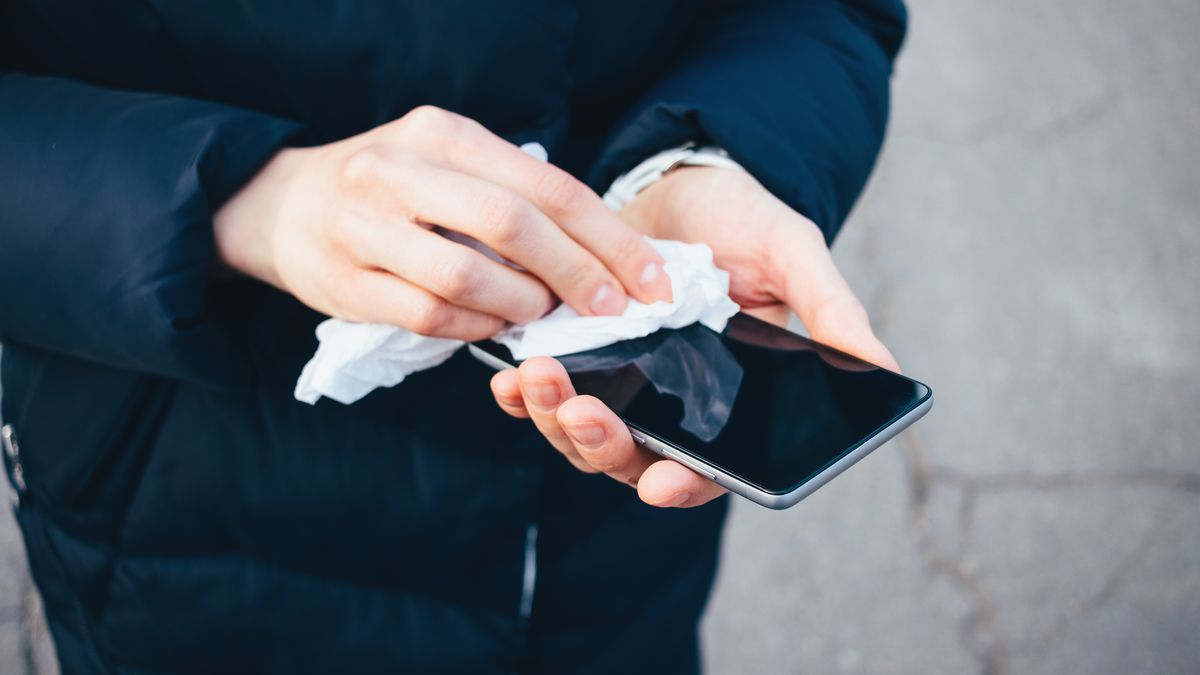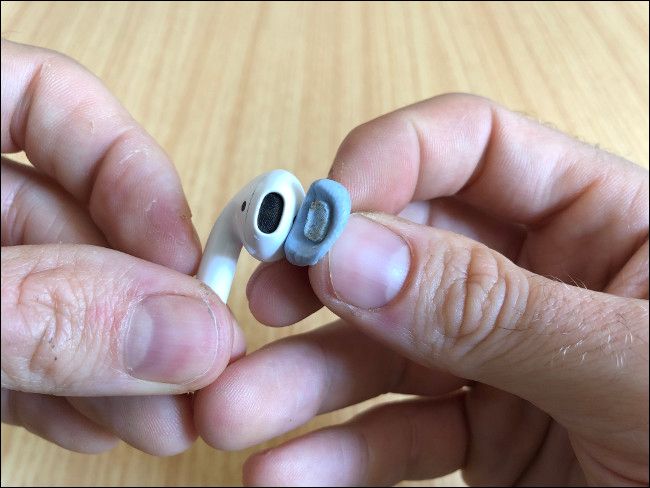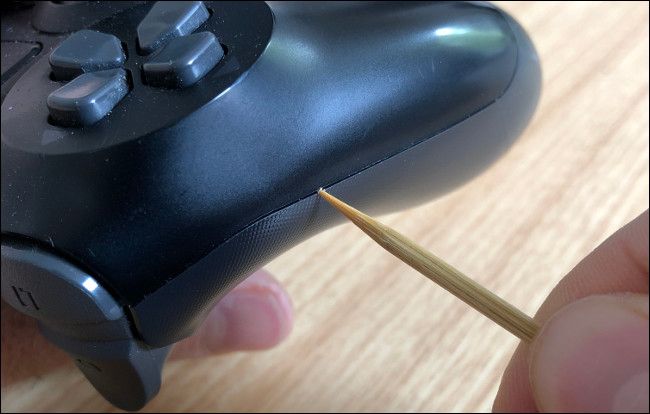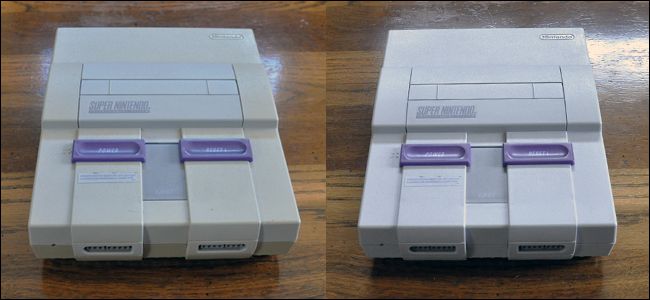Quick Links
Whether you want to protect against COVID-19 or just give all your gadgets a deep clean while you're stuck at home, now's the ideal time! Here's how you can safely clean your tech gadgets, without damaging anything.
Cleaning and Disinfecting Are Two Different Things
Prior to the coronavirus, companies like Apple advised consumers not to use anything harsher than a damp cloth and some elbow grease to clean their gadgets. Unfortunately, that won't kill bacteria or viruses, including the SARS-CoV-2 virus, which causes COVID-19.
In light of the recent outbreak, Apple has changed its tune when it comes to disinfecting your iPhone:
"Using a 70 percent isopropyl alcohol wipe or Clorox Disinfecting Wipes, you may gently wipe the exterior surfaces of your iPhone. Don't use bleach. Avoid getting moisture in any openings, and don't submerge your iPhone in any cleaning agents."
Many of the instructions for cleaning gadgets prior to this announcement still stand, as well, though. Damp cloths, soap, and elbow grease are still great if you need to remove stuck-on grime or dirt. To disinfect, though, you have to use a product that contains enough alcohol to kill potentially harmful microbes.
When it comes to hand sanitizer, the CDC advised:
"Laboratory data demonstrate that 60 percent ethanol and 70 percent isopropanol, the active ingredients in CDC-recommended alcohol-based hand sanitizers, inactivates viruses that are genetically related to, and with similar physical properties as, the 2019-nCoV."
Regardless of manufacturer instructions, if you want to effectively disinfect, you need a cleaning spray of at least 60 percent ethanol (like Dettol) or rubbing alcohol with a 70 percent concentration or more.
However, there's a small risk this might damage your hardware; you'll have to decide whether it's worth it.
Smartphones and Tablets
You can clean your smartphone with disinfecting wipes or use rubbing alcohol to disinfect the screen and chassis. The biggest danger is that you will accelerate the wear on the oleophobic (oil repelling) coating on the display.
This coating wears away over time, anyway---if you've had your device for a while, much of it is probably already gone. Fortunately, it can be reapplied with surprisingly good results, if you want to restore that shiny "new phone" look.
If you keep your phone in a case, you can remove it and wash the case thoroughly in hot soapy water. While doing so, you can also use an alcohol-based disinfectant on the rest of your phone. You should never submerge your phone in water or any other liquid, despite its waterproof rating.
To protect your phone or tablet (particularly the screen), you should avoid harsh cleaners, like bleach, window cleaners, creme cleansers, or any other detergent-based agents. These will definitely destroy the oleophobic coating, and might even leave your screen streaky or foggy.
The same advice applies to tablets, smartwatches like the Apple Watch, and fitness trackers, as well, as they're essentially just larger (or smaller) smartphones.
Laptops and Hybrids
You can clean a laptop inside and out if you have the right tools. You can use compressed air to blow out the dust. Isopropyl alcohol or ethanol will disinfect the keyboard and other high-touch surfaces. You might want to be a little more careful with the screen, particularly if it's plastic, as alcohol and other chemicals might destroy the finish.
A variety of cleaning products (including purpose-built brushes) will make this job easier. If you're particularly worried about heat dissipation, you can try to remove dust inside the chassis either by opening it up or blasting it out. If you're cleaning a MacBook, make sure you're informed about Apple's unique cooling system.
Since the majority of modern touchscreens are glass, you should be able to use an alcohol-based cleaner on a hybrid or convertible laptop.
Keyboards
Keyboards are fairly resilient, so most of us don't replace them often. This also means they're usually covered in germs, caked with grime, and filled with fluff and hair. You can clean most keyboards piece-by-piece.
To get started, remove the keys and clean them with a cloth or brush. Use compressed air to blast any dust or crumbs out of the chassis.
You can buy purpose-built brushes and hand vacuums, but these are unnecessary if you remove the keycaps for a deep clean.
Isopropyl alcohol and ethanol will help kill potentially infectious microbes. Some people go nuclear and put their (wired) keyboards in the dishwasher. Provided you dry it out thoroughly before you plug it back in, this should work. However, you might damage the finish or keys, so we don't recommend it for everyone.
Warning: Never put a wireless keyboard that features an integrated battery in the dishwasher!
Cleaning your keyboard isn't only good for hygiene, it might even improve your typing experience. Since grime builds up on the switches, removing anything that makes your keys feel "mushy" should make your keyboard feel new again.
Mice
You can follow many of the same cleaning procedures you would use for a keyboard to sanitize your computer mouse, too. Because your mouse is frequently in contact with your hand, alcohol-based cleaners are great for killing bacteria and other invisible nasties.
For those hard-to-reach places, dip a Q-tip in some alcohol and get to work. A wooden toothpick might also help you scrape any grime out of nooks and crannies. The key is to lightly clean your mouse often to prevent dirt from building up and discoloring the plastic.
Earphones and Headphones
In-ear headphones, like Apple AirPods, can get gross, fast. Fortunately, there are many great tricks for cleaning them, including a damp cloth, Blu Tack, and cotton balls. As always, isopropyl alcohol is the ideal solution if you want to fully disinfect.
Headphones are different, as they don't sit inside your ears. How you clean them ultimately depends on the material the ear cups are made of. Make sure you consult the manufacturer's specific instructions to avoid damaging your headphones.
In many cases, a quick wipe around the ear cups with a damp cloth should be enough to spruce things up. If you want to disinfect them, use isopropyl alcohol on the solid surfaces, buttons, and plug (if they're wired).
Game Controllers
If you've never cleaned your game controllers, you're in for a shock. They can get really filthy, and dirt and grime can hide in all sorts of places. You can use alcohol and Q-tips to deep-clean your game controllers. Use a toothpick to pry dirt out of those hard-to-reach places.
If you've spilled soda on any of your controllers, they're probably sticky. You might be able to use a plastic straw and some rubbing alcohol to fix spongey buttons without opening the shell. Just saturate the buttons with alcohol, and then agitate with the straw.
PC Cases
Your computer case also needs a regular cleaning, but for different reasons than your smartphone or game controllers. PCs are dust magnets, and dust hinders heat dissipation. Since heat kills computer components, it's a good idea to remove as much dust from your PC case as possible on a regular basis.
This is no small undertaking, and you have to take care not to damage any components in the process. Also, make sure you're grounded to avoid static discharge.
Warning: Never under any circumstances should you use a vacuum to clean a computer case.
For best results, clean individual components (like the graphics card) outside the case. Take this opportunity to perform any other necessary maintenance, like replacing the thermal paste, or installing additional fans, RAM, or storage.
After the case is clean, you might want to think about where it's located. If it's on the floor, it might be sucking up more dust than it would on a shelf or desk.
Monitors and Televisions
Most monitors and TV screens aren't designed to be touched. This is why they're rarely made of glass, which means they're far less resilient than a smartphone or tablet.
To avoid permanently damaging your monitor, you should clean it only with a damp cloth. Avoid harsh cleaning sprays, like Windex, or anything that contains detergent. These chemicals can (and will) damage the surface of the screen, leave streaks, or even make the display foggy and difficult to see. Plus, once you damage the surface, there's no going back.
Some monitors and televisions have cooling fans inside. Depending on its technology, dusting the back, sides, or top of your monitor can really help with heat dissipation. Since heat is the enemy of all things electronic, removing dust buildup should help extend the life of the display.
Bonus: "Yellowed" Retro Computers and Consoles
Once upon a time, most computers and games consoles were made of off-white plastic. Over the years, these machines have discolored terribly due to the bromine in ABS plastic. Fortunately, you can use a solution called "Retr0bright" to restore retro consoles and home computers to a like-new appearance.
It uses around 10 percent hydrogen peroxide to bleach the plastic, and you do have to disassemble the machine. You'll also need safety equipment, like gloves and goggles, and a well-ventilated space in which to work.
Clean Often for Best Results
You'll spend less time cleaning your gadgets if you don't wait until they're caked in grime to do it. It's also a lot more hygienic to clean them regularly. This is especially true for gadgets like smartphones, tablets, and laptops, as they're regularly exposed to your hands. Don't forget about cleaning VR headsets, either, since they're in contact with your head and face the entire time you use them.
If you were concerned enough to read this far, you also might want to stop answering phone calls the old-fashioned way.








